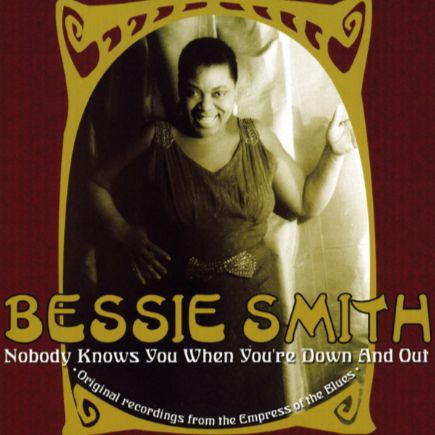After You’ve Gone: la séparation mise en mélodie
Genèse et contexte
Composée en 1918 par Turner Layton sur des paroles de Henry Creamer, After You’ve Gone s’inscrit durablement dans le répertoire populaire américain. Probablement destinée à la comédie musicale So Long, Letty, la chanson ne bénéficie ni d’une création scénique attestée ni d’une publication officielle immédiate. Cette situation n’entrave pas sa diffusion: dans l’Amérique de l’après-guerre, avide d’expressions plus intimes, le titre circule rapidement grâce aux éditeurs et aux premiers enregistrements.
Affirmation comme standard
La force de After You’ve Gone repose sur l’équilibre entre une mélodie souple et un texte empreint de regret, centré sur la séparation amoureuse. Le premier enregistrement notable est celui de Marion Harris en 1918, mais c’est à partir de 1927 que la chanson accède pleinement au statut de standard. Les interprétations de Bessie Smith et de Sophie Tucker imposent une lecture directe et expressive, qui ancre durablement le morceau dans le jazz et le blues vocal.
Un matériau toujours vivant
Au fil des décennies, After You’ve Gone devient un terrain d’expérimentation privilégié. Les artistes y modulent tempos et harmonies, proposant des lectures contrastées. La version d’Ella Fitzgerald, récompensée par un Grammy Award en 1981, illustre cette capacité de renouvellement, tandis que Benny Goodman contribue largement à sa diffusion instrumentale. Plus qu’une chanson de rupture, After You’ve Gone s’impose comme une forme ouverte, où la douleur initiale se transforme en élégance musicale durable.
La force expressive de Bessie Smith
L’interprétation de After You’ve Gone que Bessie Smith enregistre le 2 mars 1927 à New York, accompagnée par l’orchestre de Fletcher Henderson, compte parmi les lectures les plus saisissantes de ce classique du répertoire. Cette session témoigne d’un moment où le blues vocal, encore solidement ancré dans la tradition, se nourrit de l’élan rythmique et de la précision orchestrale qui s’imposent alors dans le jazz urbain.
Bessie Smith transforme cette chanson de rupture en un véritable récit de résilience. Sa voix, ample et souple, modèle chaque ligne avec une assurance souveraine, jouant sur les nuances et alternant plainte retenue et éclats d’autorité.
L’accompagnement, mené au piano par Henderson, apporte une dynamique nouvelle. L’orchestre installe une pulsation nette, plus vive que dans nombre d’enregistrements précédents de la chanteuse. Parmi les musiciens présents, on retrouvait des talents comme Coleman Hawkins, qui ajoutaient une profondeur et une richesse instrumentale à l’interprétation vocale puissante de Smith. Les contrechants, élégamment dosés, dialoguent avec elle sans jamais empiéter sur son espace expressif.
After You’ve Gone: la separación convertida en melodía
Génesis y contexto
Compuesta en 1918 por Turner Layton con letra de Henry Creamer, After You’ve Gone se integra de forma duradera en el repertorio popular estadounidense. Probablemente concebida para la comedia musical So Long, Letty, la canción no tuvo un estreno escénico documentado ni una publicación oficial inmediata. Esta situación no frenó su difusión: en la América de posguerra, en busca de expresiones más íntimas, el tema circuló rápidamente gracias a los editores y a las primeras grabaciones.
Consolidación como estándar
La fuerza de After You’ve Gone reside en el equilibrio entre una melodía flexible y una letra marcada por el arrepentimiento y la separación amorosa. La primera grabación destacada fue la de Marion Harris en 1918, pero fue a partir de 1927 cuando la canción alcanzó plenamente el estatus de estándar. Las interpretaciones de Bessie Smith y de Sophie Tucker impusieron una lectura directa y expresiva, consolidando el tema dentro del jazz y del blues vocal.
Un material siempre vivo
Con el paso de las décadas, After You’ve Gone se convirtió en un espacio privilegiado para la experimentación. Los intérpretes modifican tempos y armonías, ofreciendo versiones contrastadas. La lectura de Ella Fitzgerald, galardonada con un Grammy Award en 1981, ejemplifica esta capacidad de renovación, mientras que Benny Goodman amplió su difusión instrumental. Más que una canción de ruptura, After You’ve Gone se afirma como una forma abierta, donde el dolor inicial se transforma en elegancia musical duradera.
La fuerza expresiva de Bessie Smith
La interpretación de After You’ve Gone que Bessie Smith grabó el 2 de marzo de 1927 en New York, acompañada por la orquesta de Fletcher Henderson, figura entre las versiones más impactantes de este clásico del repertorio. La sesión refleja un momento en el que el blues vocal, aún firmemente anclado en la tradición, se nutre del impulso rítmico y la precisión orquestal del jazz urbano.
Bessie Smith transforma esta canción de despedida en un auténtico relato de resiliencia. Su voz, amplia y flexible, moldea cada frase con autoridad soberana, alternando lamentos contenidos y estallidos de firmeza.
El acompañamiento, dirigido al piano por Henderson, aporta una energía renovada. Entre los músicos presentes destacaba Coleman Hawkins, cuya aportación añadía profundidad y riqueza instrumental al poderoso enfoque vocal de Smith. Los contracantos dialogan con elegancia sin invadir su espacio expresivo.
After You’ve Gone: la separazione messa in melodia
Genesi e contesto
Composta nel 1918 da Turner Layton su testo di Henry Creamer, After You’ve Gone entra stabilmente nel repertorio popolare americano. Probabilmente destinata alla commedia musicale So Long, Letty, la canzone non ebbe né una prima scenica documentata né una pubblicazione ufficiale immediata. Ciò non ne ostacolò la diffusione: nell’America del primo dopoguerra, alla ricerca di espressioni più intime, il brano circolò rapidamente grazie agli editori e alle prime incisioni.
Affermarsi come standard
La forza di After You’ve Gone risiede nell’equilibrio tra una melodia fluida e un testo segnato dal rimpianto e dalla separazione amorosa. La prima registrazione significativa è quella di Marion Harris nel 1918, ma è dal 1927 che il brano acquisisce pienamente lo status di standard. Le interpretazioni di Bessie Smith e Sophie Tucker impongono una lettura intensa e diretta, ancorando la canzone al jazz e al blues vocale.
Un materiale sempre attuale
Nel corso dei decenni, After You’ve Gone diventa un terreno privilegiato di sperimentazione. Tempi e armonie vengono rielaborati, dando vita a interpretazioni diverse. La versione di Ella Fitzgerald, premiata con un Grammy Award nel 1981, conferma questa capacità di rinnovamento, mentre Benny Goodman ne amplia la diffusione strumentale. Più che una canzone di rottura, After You’ve Gone si afferma come una forma aperta, in cui il dolore originario si trasforma in eleganza musicale duratura.
La forza espressiva di Bessie Smith
L’interpretazione di After You’ve Gone registrata da Bessie Smith il 2 marzo 1927 a New York, accompagnata dall’orchestra di Fletcher Henderson, è una delle letture più incisive di questo classico del repertorio. La sessione testimonia un momento in cui il blues vocale, ancora radicato nella tradizione, si alimenta dell’impulso ritmico e della precisione orchestrale del jazz urbano.
Bessie Smith trasforma questa canzone di separazione in un vero racconto di resilienza. La sua voce, ampia e duttile, modella ogni frase con autorevolezza sovrana, alternando lamenti trattenuti e improvvisi slanci di forza.
Tra i musicisti presenti spiccava Coleman Hawkins, la cui presenza aggiungeva profondità e ricchezza timbrica all’intensa interpretazione vocale di Smith. I controcanti dialogano con eleganza senza mai invadere il suo spazio espressivo.
After You’ve Gone: separation set to melody
Origins and context
Composed in 1918 by Turner Layton with lyrics by Henry Creamer, After You’ve Gone holds a lasting place in the American popular song repertoire. Likely intended for the musical So Long, Letty, the song had neither a documented stage premiere nor an immediate official publication. This unusual situation did not hinder its circulation: in postwar America, seeking more intimate forms of expression, the song spread quickly through publishers and early recordings.
Establishment as a standard
The strength of After You’ve Gone lies in the balance between a flexible melody and lyrics shaped by regret and romantic separation. The first notable recording was made by Marion Harris in 1918, but it was from 1927 onward that the song fully achieved standard status. The interpretations by Bessie Smith and Sophie Tucker offered a direct and expressive reading, firmly anchoring the piece within jazz and vocal blues traditions.
A living musical form
Over the decades, After You’ve Gone has become a favored vehicle for experimentation. Artists reshape tempos and harmonies, producing contrasting interpretations. Ella Fitzgerald’s version, awarded a Grammy Award in 1981, exemplifies the song’s capacity for renewal, while Benny Goodman played a major role in expanding its instrumental presence. More than a song of heartbreak, After You’ve Gone stands as an open form, where initial sorrow is transformed into lasting musical elegance.
The expressive power of Bessie Smith
The rendition of After You’ve Gone recorded by Bessie Smith on March 2, 1927, in New York, accompanied by Fletcher Henderson’s orchestra, stands as one of the most striking interpretations of this classic. The session captures a moment when vocal blues, still firmly rooted in tradition, absorbed the rhythmic drive and orchestral precision of early urban jazz.
Bessie Smith turns this breakup song into a compelling narrative of resilience. Her voice, broad and flexible, shapes each line with sovereign authority, shifting between restraint and power.
Among the musicians present was Coleman Hawkins, whose contribution added depth and instrumental richness to Smith’s powerful vocal delivery. The countermelodies, elegantly measured, converse with her without ever intruding on her expressive space.


After You’ve Gone–22.07.1918–Marion HARRIS
After You’ve Gone–27.01.1927–THE CHARLESTON CHASERS
After You’ve Gone–26.11.1929–Louis ARMSTRONG
After You’ve Gone–04.02.1935–Coleman HAWKINS
After You’ve Gone–13.07.1935–Benny GOODMAN
After You’ve Gone–28.01.1937–Roy ELDRIDGE
After You’ve Gone–05.06.1941–Gene KRUPA & Roy ELDRIDGE
After You’ve Gone–28.01.1946–Charlie PARKER
